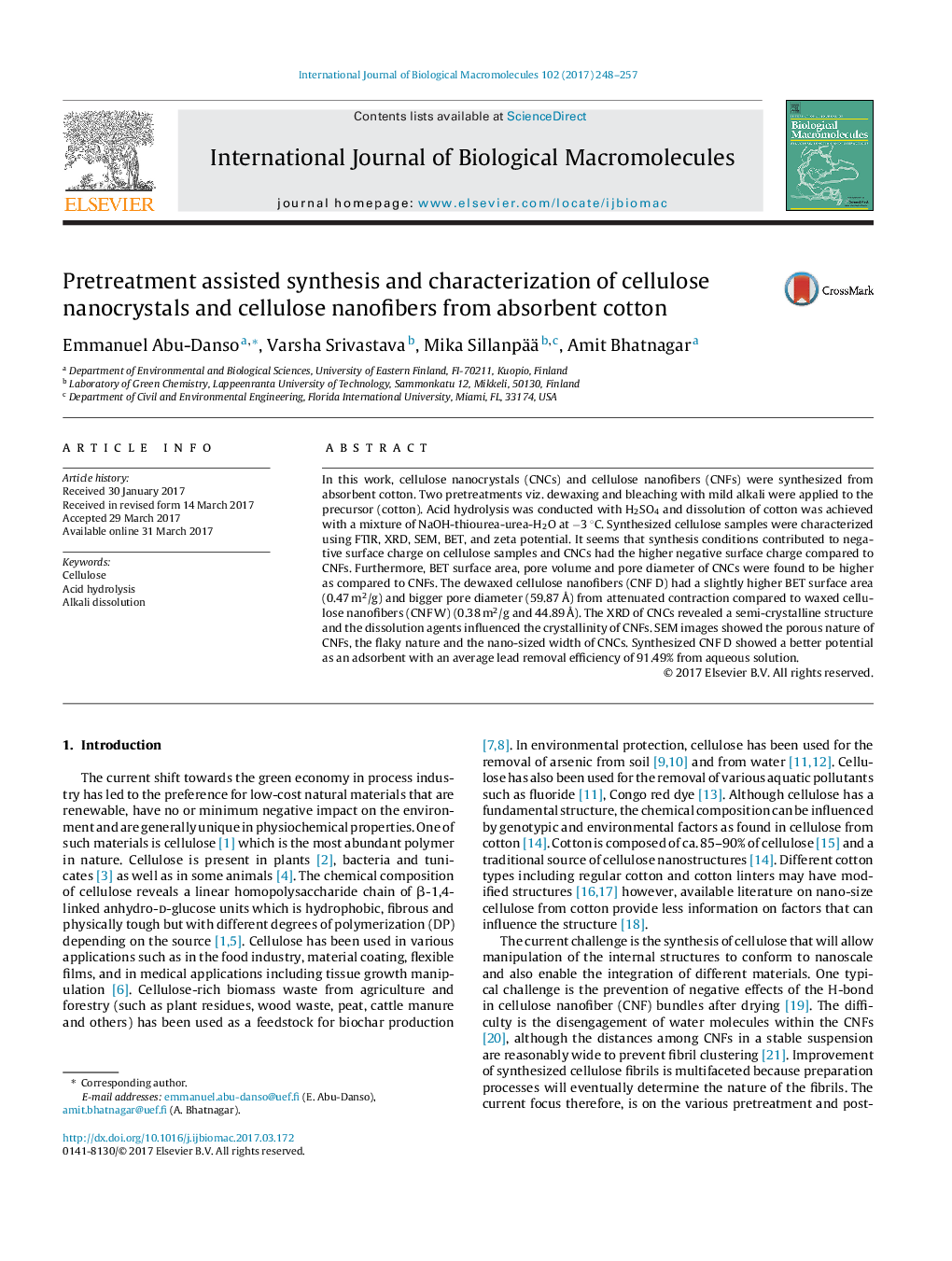| Article ID | Journal | Published Year | Pages | File Type |
|---|---|---|---|---|
| 5511749 | International Journal of Biological Macromolecules | 2017 | 10 Pages |
Abstract
In this work, cellulose nanocrystals (CNCs) and cellulose nanofibers (CNFs) were synthesized from absorbent cotton. Two pretreatments viz. dewaxing and bleaching with mild alkali were applied to the precursor (cotton). Acid hydrolysis was conducted with H2SO4 and dissolution of cotton was achieved with a mixture of NaOH-thiourea-urea-H2O at â3 °C. Synthesized cellulose samples were characterized using FTIR, XRD, SEM, BET, and zeta potential. It seems that synthesis conditions contributed to negative surface charge on cellulose samples and CNCs had the higher negative surface charge compared to CNFs. Furthermore, BET surface area, pore volume and pore diameter of CNCs were found to be higher as compared to CNFs. The dewaxed cellulose nanofibers (CNF D) had a slightly higher BET surface area (0.47 m2/g) and bigger pore diameter (59.87 Ã
) from attenuated contraction compared to waxed cellulose nanofibers (CNFÂ W) (0.38Â m2/g and 44.89Â Ã
). The XRD of CNCs revealed a semi-crystalline structure and the dissolution agents influenced the crystallinity of CNFs. SEM images showed the porous nature of CNFs, the flaky nature and the nano-sized width of CNCs. Synthesized CNF D showed a better potential as an adsorbent with an average lead removal efficiency of 91.49% from aqueous solution.
Keywords
Related Topics
Life Sciences
Biochemistry, Genetics and Molecular Biology
Biochemistry
Authors
Emmanuel Abu-Danso, Varsha Srivastava, Mika Sillanpää, Amit Bhatnagar,
